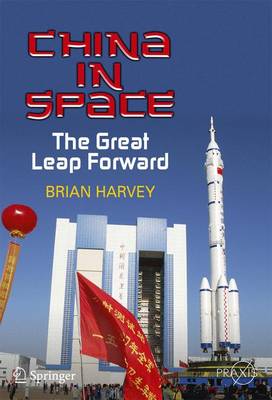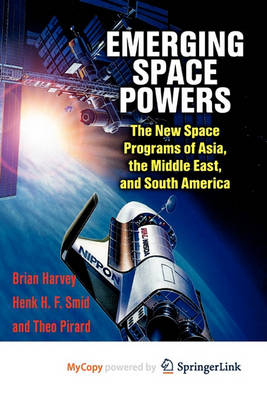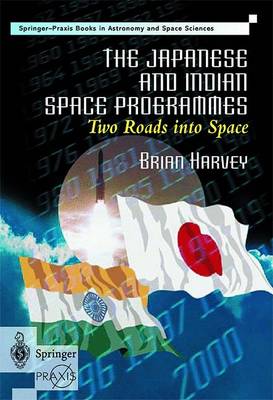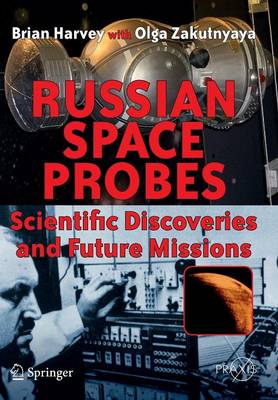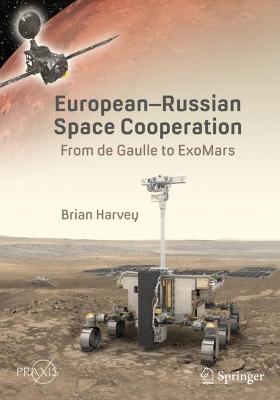Space Exploration
10 total works
This book tells the story of the Soviet and Russian lunar programme, from its origins to the present-day federal Russian space programme. Brian Harvey describes the techniques devised by the USSR for lunar landing, from the LK lunar module to the LOK lunar orbiter and versions tested in Earth's...
Read moreThis book tells the story of the Soviet and Russian lunar programme, from its origins to the present-day federal Russian space programme. Brian Harvey describes the techniques devised by the USSR for lunar landing, from the LK lunar module to the LOK lunar orbiter and versions tested in Earth's orbit. He asks whether these systems would have worked and examines how well they were tested. He concludes that political mismanagement rather than technology prevented the Soviet Union from landing cosmonauts on the moon. The book is well timed for the return to the moon by the United States and the first missions there by China and India.
This book provides an annual update on recent space launches, missions and results. The annual, written for both young and older space enthusiasts, provides a regular, balanced review of all the world's major space programmes. It covers space exploration from a variety of angles: looking back at past missions,...
Read moreThis book provides an annual update on recent space launches, missions and results. The annual, written for both young and older space enthusiasts, provides a regular, balanced review of all the world's major space programmes. It covers space exploration from a variety of angles: looking back at past missions, reviewing those currently under way and looking to those planned for the future. The ten invited contributions each year will cover a variety of topics within these areas. The book is for space enthusiasts from teens upwards through to professionals working in the worldwide space industry and journalists covering space issues.
This work introduces the important emerging space powers of the world.
Brian Harvey describes the origins of the Japanese space program, from rocket designs based on WW II German U-boats to tiny solid fuel 'pencil' rockets, which led to the launch of the first Japanese satellite in 1970. The...
Read moreThis work introduces the important emerging space powers of the world.
Brian Harvey describes the origins of the Japanese space program, from rocket designs based on WW II German U-boats to tiny solid fuel 'pencil' rockets, which led to the launch of the first Japanese satellite in 1970. The next two chapters relate how Japan expanded its space program, developing small satellites into astronomical observatories and sending missions to the Moon, Mars, comet Halley, and asteroids.
Chapter 4 describes how India's Vikram Sarabhai developed a sounding rocket program in the 1960s. The following chapter describes the expansion of the Indian space program. Chapter 6 relates how the Indian space program is looking ahead to the success of the moon probe Chandrayan, due to launch in 2008, and its first manned launching in 2014. Chapters 7, 8, and 9 demonstrate how, in Iran, communications and remote sensing drive space technology.
Chapter 10 outlines Brazil's road to space, begun in the mid-1960's with the launch of the Sonda sounding rockets. The following two chapters describe Brazil's satellites and space launch systems and plans for the future. Chapters 13 and 14 study Israel's space industry. The next chapters look at the burgeoning space programs of North and South Korea.
The book ends by contrasting and comparing all the space programs and speculating how they may evolve in the future. An appendix lists all launches and launch attempts to date of the emerging space powers.
Explorers have made some of the fundamental discoveries of the Space Age. Explorer 1 discovered Earth’s radiation belts. Later Explorers surveyed the Sun, the X-ray and ultraviolet universes, black holes, magnetars and gamma ray bursts. An Explorer found the remnant of the Big Bang. One Explorer chased and was the first to intercept a comet.
The program went through a period of few launches during the crisis of funding for space science in the 1980s. However, with the era of ‘faster, cheaper, better,’ the program was reinvented, and new exiting missions began to take shape, like Swift and the asteroid hunter WISE.
Discovering the Cosmos with Small Spacecraft gives an account of each mission and its discoveries. It breaks down the program into its main periods of activity and examines the politics and debate on the role of small spacecraft in space science. It introduces the launchers (Juno, Thor, etc.), the launch centers, the ground centers and key personalities like James Van Allen who helped develop and run the spacecraft’s exciting programs.
This, fifty years after Sputnik, is the definitive book on the Russian space program. The author covers all the key elements of the current Russian space program, including both manned and unmanned missions. He examines the various types of unmanned applications programs as well as the crucial military program,...
Read moreThis, fifty years after Sputnik, is the definitive book on the Russian space program. The author covers all the key elements of the current Russian space program, including both manned and unmanned missions. He examines the various types of unmanned applications programs as well as the crucial military program, and even analyzes the infrastructure of production, launch centres and tracking. You'll also find discussion of the commercialization of the program and its relationship with western companies. Russia's current space experiment is also put in a comparative global context. Strong emphasis is placed on Russia's future space intentions and on new programs and missions in prospect.
The Japanese and Indian Space Programmes: Two Roads Into Space
by Brian Harvey
There is a general introductory chapter...Read more
There is a general introductory chapter which places the space programmes of the region in the comparative context of the other space-faring nations of the world. The author reviews the main space programmes of Japan and India in turn, concentrating on their origins, the development of launcher and space facilities, scientific and engineering programmes, and future prospects.
The book concludes with a chapter comparing how similarly/differently Japan and India are developing their space programmes, how they are likely to proceed in the future, and what impact the programmes have had in their own region and what they have contributed so far to global space research.
The story of European-Russian collaboration in space is little known and its importance all too often understated. Because France was the principal interlocutor between these nations, such cooperation did not receive the attention it deserved in English-language literature. This book rectifies that history, showing how Russia and Europe forged...
Read moreThe story of European-Russian collaboration in space is little known and its importance all too often understated. Because France was the principal interlocutor between these nations, such cooperation did not receive the attention it deserved in English-language literature. This book rectifies that history, showing how Russia and Europe forged a successful partnership that has continued to the present day.
Space writer Brian Harvey provides an in-depth picture of how this European-Russian relationship evolved and what factors-scientific, political and industrial-propelled it over the decades. The history begins in the cold war period with the first collaborative ventures between the Soviet Union and European countries, primarily France, followed later by Germany and other European countries. Next, the chapters turn to the missions when European astronauts flew to Russian space stations, the Soyuz rocket made a new home in European territory in the South American jungle and science missions were flown to study deep space. Their climax is the joint mission to explore Mars, called ExoMars, which has already sent a mission to Mars.
Through this close examination of these European-Russian efforts, readers will appreciate an altogether new perspective on the history of space exploration, no longer defined by competition, but rather by collaboration and cooperation.

